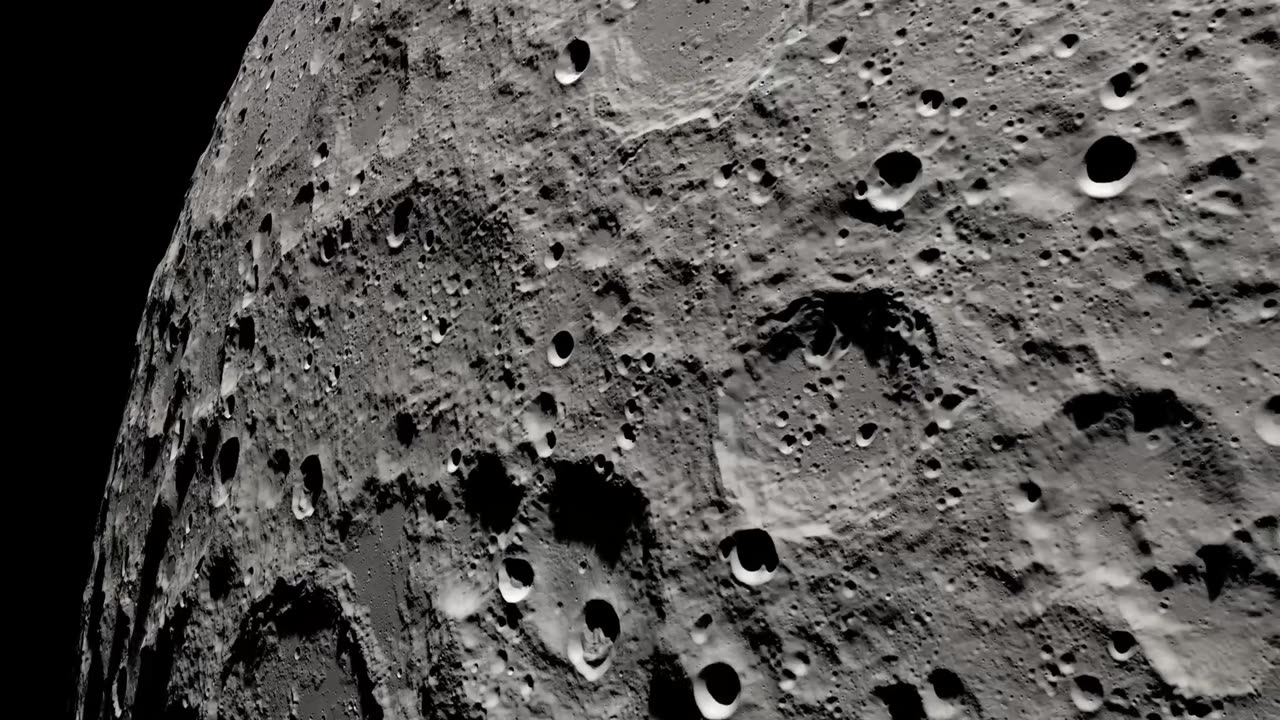Premium Only Content

Apollo 13: Unforgettable Glimpses of the Moon"
Apollo 13, a critical and dramatic mission in the Apollo program, offered unique and breathtaking views of the Moon from the vantage point of its spacecraft. Launched on April 11, 1970, with the goal of landing astronauts on the lunar surface, Apollo 13 encountered a life-threatening crisis when an oxygen tank exploded, forcing the crew to abort their lunar landing plans and focus on a safe return to Earth.
Despite not achieving its original objective, Apollo 13 still provided captivating views of the Moon during its journey. As the spacecraft looped around the Moon, the crew members—command module pilot John Swigert, lunar module pilot Fred Haise, and mission commander James Lovell—witnessed the lunar landscape from a distance, capturing their observations both in words and through the spacecraft's windows.
Here's a description of some of the views they might have experienced:
Surface Features: The astronauts would have seen a variety of craters, mountain ranges, and valleys on the lunar surface. The stark contrast between the bright lunar highlands and the darker maria (large, flat plains) would have been evident.
Moon's Horizon: The Moon lacks an atmosphere, so its horizon appears sharper and clearer than that of Earth. The astronauts would have noticed a more defined line between the lunar surface and the blackness of space.
Sunrises and Sunsets: The changing angle of sunlight would have created stunning visual effects as shadows lengthened and shortened across the Moon's surface. The play of light and shadow would have revealed the rugged terrain in intricate detail.
Crater Detail: Observing the intricate details of lunar craters—ranging from small, bowl-shaped depressions to larger, complex structures—would have been an awe-inspiring experience for the astronauts.
Earthrise and Earthset: While Apollo 13 didn't have the opportunity to capture the iconic "Earthrise" photo like Apollo 8 and Apollo 11, the astronauts could still have witnessed the Earth rising above the lunar horizon, providing a unique perspective of our home planet against the backdrop of space.
Starfield: The absence of atmospheric interference would have allowed the crew to see stars and constellations with exceptional clarity, offering a view of the cosmos that's difficult to replicate from Earth.
Silent Serenity: Beyond the visual aspects, the serenity and stillness of space would have been palpable as the spacecraft floated in lunar orbit. The quiet isolation of the Moon's surroundings would have created a profound sense of awe and reflection.
Apollo 13's unplanned flyby of the Moon, though fraught with challenges, offered a glimpse of the lunar surface and the celestial beauty of space. The crew's observations, experiences, and photographs contributed not only to our understanding of the Moon but also to our appreciation of the vastness and wonder of the universe.
-
 LIVE
LIVE
NEWSMAX
1 hour agoThe Gerry Callahan Show LIVE (04/28/2025) | NEWSMAX Podcasts
415 watching -
 5:27
5:27
SKAP ATTACK
11 hours ago $0.08 earnedLeBron Choking Yet Again...in the First Round
1224 -
 14:16
14:16
QNewsPatriot
8 hours ago(4/27/2025) | Official Statement Video by SGAnon Regarding QNewsPatriot's 2025 Syndication and Amplification Partnerships
18.8K56 -
 LIVE
LIVE
Wendy Bell Radio
5 hours agoSUPREME COWARDS
9,652 watching -
 1:27:26
1:27:26
JULIE GREEN MINISTRIES
3 hours agoLIVE WITH JULIE
84.5K176 -
 DVR
DVR
Welcome to the Rebellion Podcast
21 hours ago $1.55 earnedHe Wore a Blue Suit - WTTR Podcast Live 4/28
12.7K1 -
 1:54:43
1:54:43
Game On!
18 hours ago $4.18 earnedMel Kiper believes Shedeur Sanders will WIN a SUPER BOWL for the Browns!
24.7K1 -
 9:20
9:20
Tactical Advisor
1 day agoNew Shadow 2 Carry | CZ Compact Upgrade (FIRST LOOK)
119K25 -
 14:05
14:05
WhaddoYouMeme
19 hours ago $3.14 earnedThe Dangerous Lie He Told MILLIONS About Christianity
34.4K31 -
 15:47
15:47
Film Threat
14 hours agoSTAR WARS EPISODE III: REVENGE OF THE SITH RE-RELEASE | Film Threat Review
45.7K3